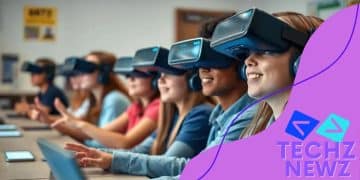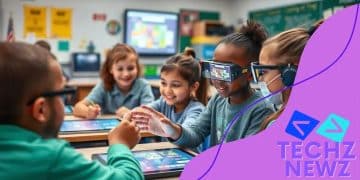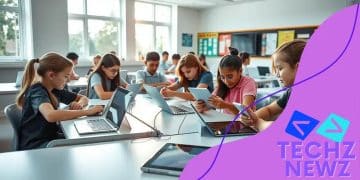Gamification for student engagement in classrooms
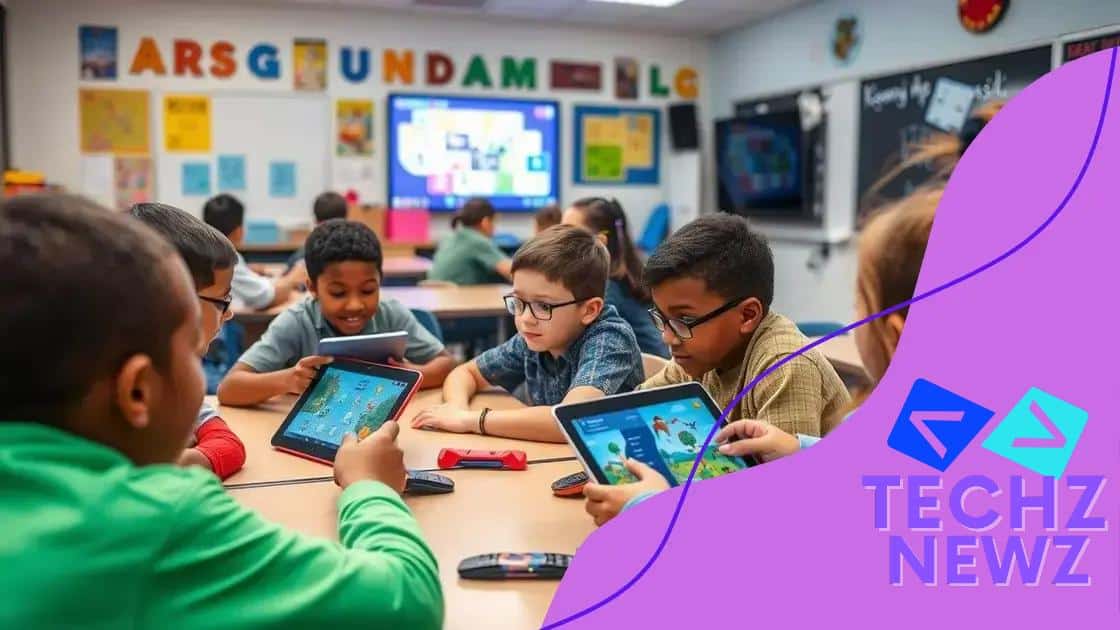
Gamification for student engagement in classrooms enhances motivation and learning retention by incorporating game elements, making education interactive and enjoyable.
Gamification for student engagement in classrooms has become a buzzword among educators seeking innovative ways to captivate learners. Have you wondered how game elements can make lessons more enjoyable? Let’s explore this exciting trend together.
Understanding gamification in education
Understanding gamification in education is essential for creating engaging classroom environments. By integrating game-like elements into learning, educators can boost student motivation and participation. This approach reflects a shift from traditional teaching methods to more interactive experiences.
What is Gamification?
At its core, gamification involves applying game design elements in non-game contexts. In education, this means using points, badges, and challenges to make learning more appealing. By incorporating these elements, students become more invested in their education.
Benefits of Gamification
- Increased engagement: Gamification captures students’ attention and keeps them interested in the material.
- Enhanced motivation: By rewarding achievements, students are more likely to pursue challenges and strive for success.
- Collaboration: Many gamified activities encourage teamwork, helping students develop social skills.
Furthermore, gamification fosters a sense of achievement. As students complete levels or earn rewards, they gain confidence in their abilities. Teachers who implement these strategies often report improved classroom dynamics and a more positive learning atmosphere.
It’s essential to create a balance in gamification. While prizes and accolades are motivating, the primary focus should always be on learning. Successful gamification practices nurture curiosity and collaboration without overshadowing educational content.
Educators can begin by integrating simple gamified activities, like quizzes with point systems or group challenges. Over time, they can explore more complex systems that incorporate technology, such as apps that track progress.
Benefits of gamification for student engagement
The benefits of gamification for student engagement are profound and impactful. By applying game mechanics to educational settings, teachers can significantly enhance how students connect with their learning experiences. This approach not only makes learning fun but also effective.
Increased Motivation
One major benefit is the increase in student motivation. When lessons incorporate elements of competition or achievement, students are more likely to participate. This motivation helps them focus on their tasks, improving their overall performance.
- Immediate feedback: Gamification provides real-time responses, allowing students to see their progress.
- Goal-oriented learning: Setting clear objectives helps students understand what they need to achieve.
- Reward systems: Badges or points activate a sense of accomplishment, encouraging them to keep going.
Gamification also promotes healthy competition among peers. Students often push each other to excel, leading to a more dynamic classroom environment. As they strive to earn rewards or recognition, they develop resilience and determination as well.
Enhanced Learning Retention
Furthermore, gamification enhances learning retention. When students engage through games, they often remember the content better. The incorporation of fun and interactive elements allows for deeper connections with the material.
As students navigate challenges and solve problems, they apply critical thinking skills. This active involvement helps solidify their understanding of concepts, leading to long-term retention. Moreover, gamification caters to different learning styles, making it accessible for all students.
Another benefit is improved classroom dynamics. With gamified activities, educators can create collaborative environments. Students learn to work as a team and appreciate one another’s strengths, which builds camaraderie among peers.
Practical examples of gamification activities
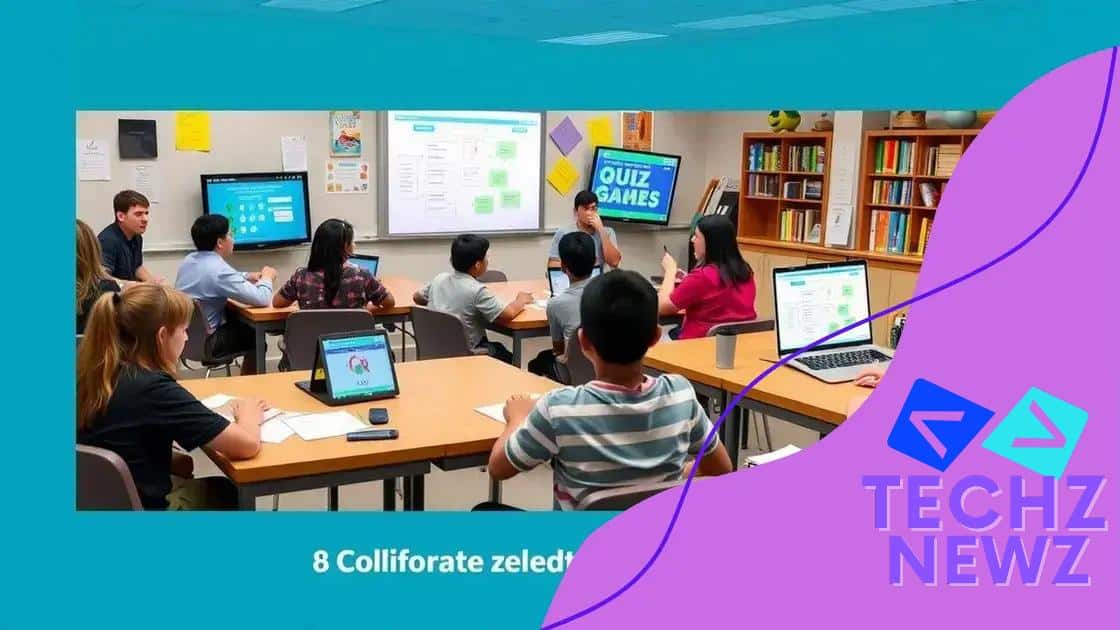
Practical examples of gamification activities illustrate how educators can apply this approach effectively in the classroom. These activities not only engage students but also enhance their learning experiences. By embedding game elements into lessons, teachers create an exciting environment that motivates students.
Classroom Challenges
One effective activity is organizing classroom challenges. These can be trivia competitions where students earn points for correct answers. This method encourages friendly competition and provides immediate feedback, helping students track their progress.
- Quiz games: Utilize platforms like Kahoot! or Quizizz for interactive quizzes.
- Escape room challenges: Create puzzles that students must solve collaboratively.
- Leaderboards: Display student achievements prominently to foster motivation.
These activities not only make learning fun but also encourage teamwork and critical thinking among students.
Project-Based Learning with Gamification
Another engaging activity is project-based learning infused with gamification. Assign students projects that allow them to explore real-world problems. Integrate game mechanics like earning badges for completing phases of their projects.
For instance, students might design a product, then pitch it to the class, earning points for creativity, teamwork, and presentation skills. This approach emphasizes learning through experience while maintaining a playful aspect that captures attention.
Additionally, using storytelling in projects can enhance engagement. When students frame their work within a narrative, it adds excitement and context to the concepts they are learning. By encouraging creativity, students are more likely to take ownership of their learning.
Incorporating gamification into everyday lessons can transform how students view education. Learning becomes not just a task but an adventure they want to pursue. From leaderboards to badges, the possibilities are endless.
Tools for implementing gamification in classrooms
When it comes to implementing gamification in classrooms, various tools can make the process straightforward and engaging. These tools help teachers incorporate game elements into their lessons, enhancing student participation and learning experiences.
Learning Management Systems
Many teachers start with learning management systems (LMS) that support gamified features. These platforms allow you to create interactive modules and track student progress. Here are some popular options:
- Google Classroom: This platform integrates various gamification tools, allowing teachers to post assignments and give feedback easily.
- Edmodo: It offers scoring systems and badges to motivate students.
- Schoology: This LMS includes gamified elements like leaderboards to encourage competition.
By using these systems, teachers can structure their lessons to keep students involved.
Gamification Apps
In addition to LMS, several dedicated gamification apps can enhance classroom activities. They engage students through interactive challenges and rewards. Some of these apps include:
- Kahoot! This quiz-based platform allows for real-time competition among students, making learning fun.
- Classcraft: It enables students to create avatars and earn points for positive behavior.
- Quizizz: Similar to Kahoot!, Quizizz offers a range of quizzes while providing instant feedback.
These tools add an exciting layer to traditional educational methods, and students enjoy the interaction. They are also excellent for group activities.
Teachers can choose tools based on their classroom needs. Some focus more on rewards, while others may emphasize competition. Selecting the right tool can significantly affect student engagement and motivation.
Finally, integrating technology with these gamification tools can enhance the overall learning experience. By using interactive apps and LMS, teachers can foster a supportive and exciting learning environment where students thrive.
Measuring the impact of gamification on learning
Measuring the impact of gamification on learning is crucial for educators who want to assess the effectiveness of their teaching strategies. By understanding how gamification influences student engagement and achievement, teachers can make informed decisions about their curriculum.
Data Collection Methods
One way to measure this impact is through various data collection methods. Educators can utilize surveys and questionnaires that gather student feedback on their learning experiences. These can include questions about motivation, engagement, and enjoyment in the classroom.
- Pre- and post-assessments: Comparing students’ performance before and after implementing gamified elements can showcase improvements.
- Observation: Teachers can observe class dynamics and student interactions during gamified activities.
- Tracking progress: Use gamification tools to track individual student progress over time.
By collecting this data, teachers can analyze trends in student behavior and learning outcomes.
Qualitative and Quantitative Analysis
Both qualitative and quantitative analyses are important for understanding the data collected. Qualitative data includes personal anecdotes and stories from students about their experiences with gamified learning. This narrative can provide valuable insights that numbers alone cannot convey.
On the other hand, quantitative data focuses on measurable outcomes, like test scores or completion rates. Analyzing these statistics can reveal patterns and help determine if gamification is effectively enhancing learning.
Furthermore, teachers might compare the performance of students who engage with gamified content against those who do not. This comparison can provide a clearer picture of the added benefits of gamification.
Ultimately, continuous evaluation of the impact of gamification on learning allows educators to refine their approaches. It creates a feedback loop, ensuring that the classroom remains a dynamic, engaging space for all students.
FAQ – Frequently Asked Questions About Gamification in Education
What is gamification in education?
Gamification in education involves using game elements in learning activities to enhance student engagement and motivation.
How can I measure the impact of gamification on student learning?
You can measure the impact through surveys, pre-and post-assessments, and analyzing student performance data.
What are some effective tools for gamifying lessons?
Some effective tools include Google Classroom, Kahoot!, and Classcraft, which offer various gamification features to engage students.
Can gamification improve student retention of content?
Yes, gamification has been shown to improve student retention by making learning more interactive and enjoyable.
